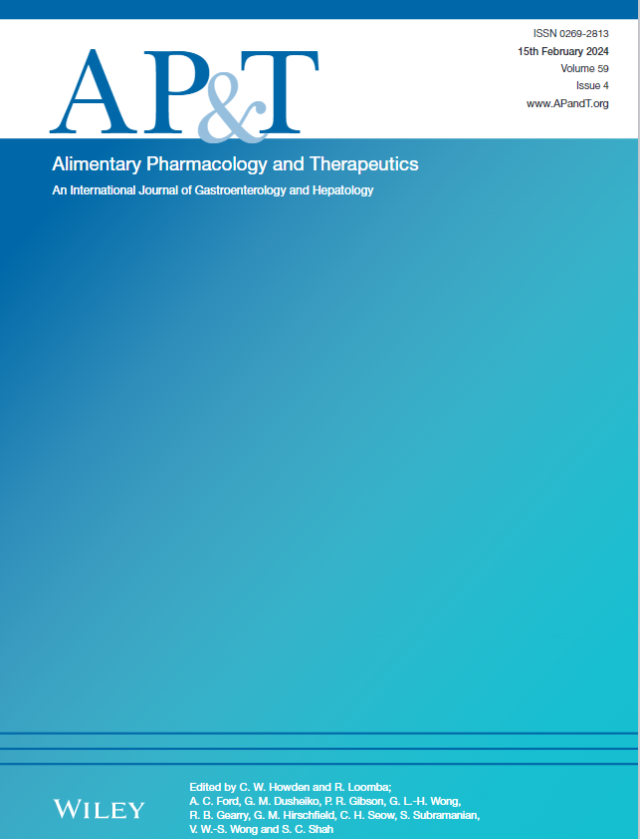代谢功能障碍相关脂肪变性肝病健康的社会决定因素和全因/病因特异性死亡率
IF 6.7
1区 医学
Q1 GASTROENTEROLOGY & HEPATOLOGY
引用次数: 0
摘要
健康的社会决定因素(SDoH)是可预防的健康不平等,代谢功能障碍相关脂肪变性肝病(MASLD)患者的SDoH与健康结果之间的关系尚不清楚。目的:我们调查了美国MASLD患者的SDoH与死亡率之间的关系。方法:我们使用2007-2016年全国健康与营养调查数据进行回顾性分析,并对随访至2019年的死亡率数据进行评估。SDoH评分来自问卷调查,MASLD采用无创面板和心脏代谢标准定义。Cox回归模型用于评估SDoH与MASLD患者全因/病因特异性死亡率之间的关系。结果我们分析了12321例MASLD患者(平均年龄47.0岁,男性48.4%)。在7.6年的中位随访期间,较高的SDoH评分与逐渐增加的全因死亡率风险相关。结果在多变量模型中保持一致。此外,较高的不利SDoH评分与心血管和癌症相关死亡率增加有关。具体来说,SDoH评分每增加1分,全因死亡率的风险增加32%(风险比[HR]: 1.32, 95%可信区间[CI]: 1.25-1.38),心血管(风险比:1.29,95% CI: 1.19-1.40)和癌症相关死亡率(风险比:1.21,95% CI: 1.07-1.36)分别增加29%和21%。就业状况、粮食不安全、家庭收入、私人保险覆盖率和婚姻状况与MASLD患者的全因死亡率独立相关。结论:这项基于美国人群的研究表明,在MASLD患者中,SDoH评分与全因/病因特异性死亡率的增加呈剂量依赖性。本文章由计算机程序翻译,如有差异,请以英文原文为准。
Social Determinants of Health in Metabolic Dysfunction-Associated Steatotic Liver Disease and All-Cause/Cause-Specific Mortality.
BACKGROUND
Social determinants of health (SDoH) are the preventable health inequities, and the associations between SDoH and health outcomes among individuals with metabolic dysfunction-associated steatotic liver disease (MASLD) remain unclear.
AIMS
We investigated the relationship between SDoH and mortality in individuals with MASLD in the US.
METHODS
We conducted a retrospective analysis using data from the 2007-2016 National Health and Nutrition Examination Survey, with follow-up mortality data assessed through 2019. SDoH score was derived from questionnaires, and MASLD was defined using non-invasive panels and cardiometabolic criteria. Cox regression models were used to evaluate the association between SDoH and all-cause/cause-specific mortality among individuals with MASLD.
RESULTS
We analysed 12,321 individuals with MASLD (mean age: 47.0 years; 48.4% males). Over a median follow-up period of 7.6 years, higher SDoH scores were associated with progressively increased hazards of all-cause mortality. The results remained consistent in a multivariable model. Additionally, higher unfavourable SDoH scores were associated with increased cardiovascular and cancer-related mortality. Specifically, there was a 32% increase in hazards for all-cause mortality (hazard ratio [HR]: 1.32, 95% confidence interval [CI]: 1.25-1.38) and increases of 29% and 21% for cardiovascular (HR: 1.29, 95% CI: 1.19-1.40) and cancer-related mortality (HR: 1.21, 95% CI: 1.07-1.36), respectively, for each one-point increase in SDoH score. Employment status, food insecurity, family income, private insurance coverage, and marital status were independently associated with all-cause mortality in individuals with MASLD.
CONCLUSIONS
This US population-based study demonstrates that SDoH scores are dose-dependently associated with increased all-cause/cause-specific mortality among individuals with MASLD.
求助全文
通过发布文献求助,成功后即可免费获取论文全文。
去求助
来源期刊
CiteScore
15.60
自引率
7.90%
发文量
527
审稿时长
3-6 weeks
期刊介绍:
Alimentary Pharmacology & Therapeutics is a global pharmacology journal focused on the impact of drugs on the human gastrointestinal and hepato-biliary systems. It covers a diverse range of topics, often with immediate clinical relevance to its readership.

 求助内容:
求助内容: 应助结果提醒方式:
应助结果提醒方式:


